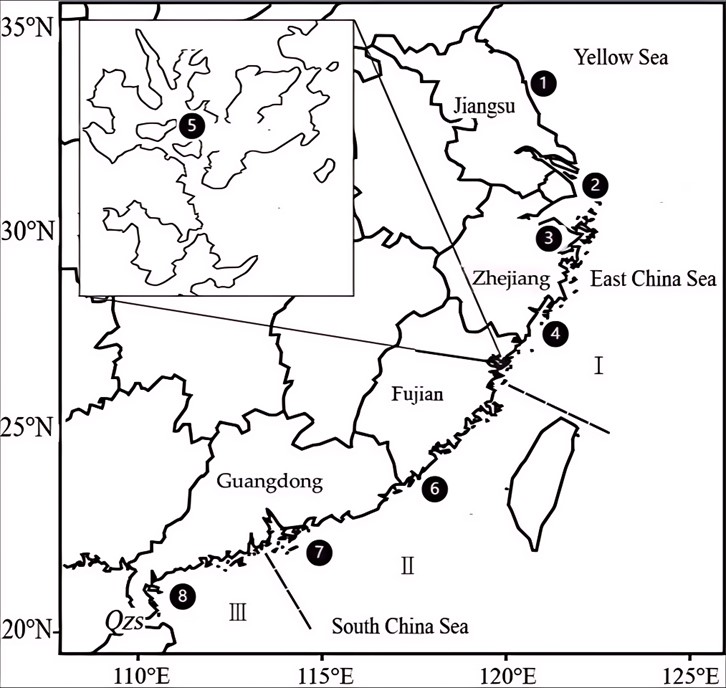Germplasm innovation of large yellow croaker and its research progress
Published 22 June, 2025
Large yellow croaker (Larimichthys crocea) is a major fishery resource in the southeastern coastal regions of China, ranking first among the “Four Major Sea Products” of the East China Sea. Germplasm resources are indispensable for the healthy and sustainable development of large yellow croaker aquaculture industry.
In a new review published in Reproduction and Breeding, a team of researchers in China summarized the progress in the conservation and exploitation of large yellow croaker germplasm resources and germplasm innovation. Along the main line of conservation of large yellow croaker germplasm resources and the creation of good varieties, the development direction of creating major new varieties for complex economic traits was proposed, providing theoretical support for realizing the significant improvement of the coverage rate of improved varieties of large yellow croaker and the healthy development of large yellow croaker industry.
“Due to geographical distribution differences, large yellow croaker shows a series of geographical diversity in morphology, forming distinct populations and groups,” shares first author Huan Liu. “To date, there is ongoing academic debate regarding the division of geographical populations and spawning groups of large yellow croaker.”
Historically, the classification proposed by Tian Mingcheng in 1962 has been widely used. This classification divides large yellow croaker into three geographical populations from north to south: the Dai-qu stock, the Min-yuedong stock, and the Nao-zhou stock. “In the 1950s-1960s, the prevalent ‘Qiaogu’ fishing method in the southeastern coastal areas of China once led to the depletion of large yellow croaker resources,” adds Liu. “The destructive encirclement fishing with ‘motorized large seine nets’ from the 1970s to early 1980s completely cut off the fishing season of large yellow croaker in the southeast coastal area.”
In order to restore the natural fishery resources of large yellow croaker, Fujian Province established the “Guanjingyang Large Yellow Croaker Breeding Reserve” in 1985. Supported by various levels of government and the efforts of scientists, a series of breakthroughs have been made in the artificial breeding and aquaculture technology of large yellow croaker.
“With the breakthrough of the large yellow croaker artificial aquaculture technology and the rapid development of the large yellow croaker farming industry, the identification and evaluation, and genetic breeding of large yellow croaker germplasm resources have gradually unfolded and become active.” adds Liu. “With the continuous development of biotechnology, fish genetic breeding techniques have evolved from traditional breeding technologies such as selective breeding, hybrid breeding, and gynogenesis breeding to modern biological breeding technologies, including sex control breeding, molecular marker-assisted selective breeding, and genome-wide selective breeding.”
On this basis, many domestic research teams have successively cultivated a number of new lineages and varieties of large yellow croaker by using technologies such as population selective breeding, family selective breeding, gynogenesis, and genome-wide selective breeding.

Contact author name:Shi Wang, Engineering Research Center of Polyploid Fish Reproduction and Breeding of the State Education Ministry, College of Life Sciences, Hunan Normal University, Changsha, 410081, Hunan, P.R. China. wangshixyz@126.com.
Funder: This work was supported by the National Key R&D Program of China (Grant No. 2022YFD2401003, 2022YFD2401004), the National Natural Science Foundation of China (Grant No. 32373119, 32293252), the Youth Science and Technology Talents Lifting Project of Hunan Province (Grant No. 2023TJ-N02), the Training Program for Excellent Young Innovators of Changsha (Grant No. kq2107006), the earmarked fund for China Agriculture Research System (Grant No. CARS-45), 111 Project (D20007).
Conflict of interest: Shaojun Liu is the editor-in-chief for Reproduction and Breeding and was not involved in the editorial review or the decision to publish this article. All authors declare that there are no competing interests.
See the article: Huan Liu, et al., Germplasm innovation of large yellow croaker and its research progress, Reproduction and Breeding, Volume 5, Issue 2, 2025, Pages 44-53, https://doi.org/10.1016/j.repbre.2025.03.006.